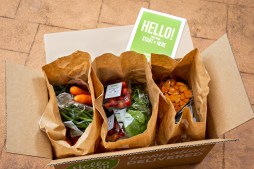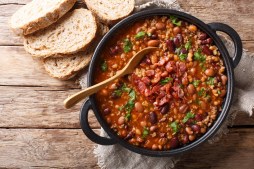Top 5 Strategies for Affordable Teen Nutrition that Parents Swear By
Feeding teenagers can be a daunting task, especially when trying to maintain a budget. With their growing bodies and increasing appetites, it’s essential to provide nutritious meals without breaking the bank. In this article, we’ll explore five effective strategies that parents have found helpful in managing teen nutrition affordably.
Plan Meals Ahead of Time
One of the most effective ways to keep your grocery spending in check is by planning your meals for the week ahead. Take some time each weekend to create a meal plan that includes breakfast, lunch, dinner, and snacks. This not only helps you avoid impulse purchases at the store but also ensures you buy only what you need—reducing food waste and ensuring balanced nutrition for your teens.

Embrace Bulk Buying
Buying in bulk can lead to significant savings on grocery bills. Consider purchasing staples such as rice, pasta, canned goods, and frozen fruits or vegetables in larger quantities. Not only does this often reduce the per-unit cost, but it also means you’ll have healthy options readily available at home. Just be sure to store items properly so they stay fresh longer.
Get Creative with Leftovers
Leftovers can be a lifesaver when feeding hungry teens. Instead of letting extra food go to waste after dinner, get creative by repurposing it into new meals for lunch or dinner the next day. For example, leftover grilled chicken can become chicken salad sandwiches or added into stir-fries. This reduces food waste and gives your teens variety without additional costs.
Involve Teens in Cooking
Getting your teenagers involved in meal preparation can foster their interest in healthy eating while also providing an opportunity for learning essential cooking skills. Take them grocery shopping with you so they understand budgeting better and allow them to help choose recipes based on what’s on sale or in season—this engagement encourages them to appreciate wholesome foods more.
Focus on Whole Foods Over Processed Options
While pre-packaged snacks may seem convenient for busy teens, they often come with hidden costs—both financially and nutritionally. Opting for whole foods like fruits, vegetables, whole grains, lean proteins (like beans or eggs), and dairy products not only supports healthier eating habits but is typically more economical than processed options packed with additives.
Feeding teens on a budget doesn’t have to be overwhelming. By implementing these five strategies—meal planning, bulk buying, creatively using leftovers, involving teens in cooking activities, and focusing on whole foods—you’ll provide nutritious meals while keeping costs low.
This text was generated using a large language model, and select text has been reviewed and moderated for purposes such as readability.











